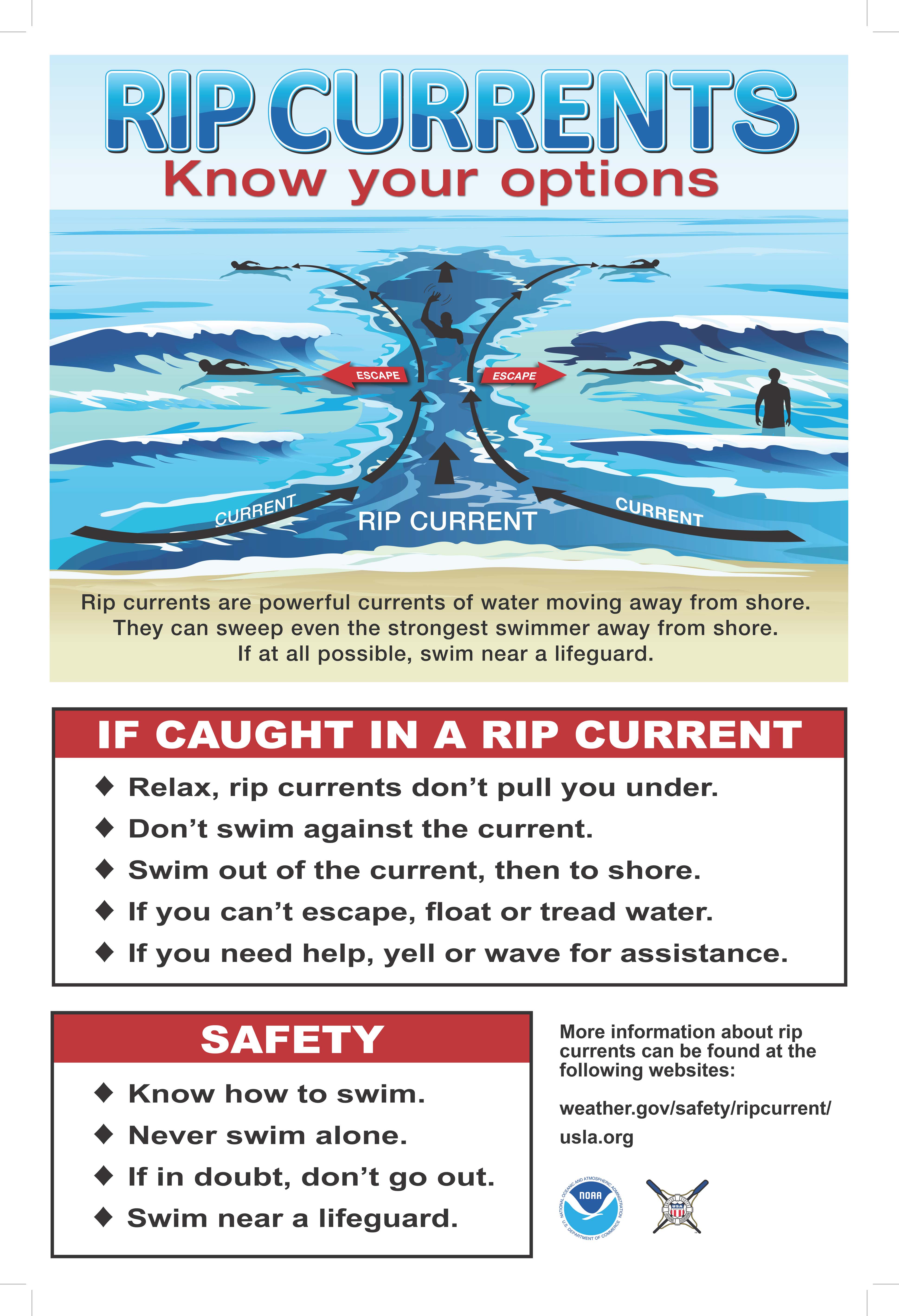National Weather Service and National Sea Grant Program, in partnership with the United States Lifesaving Association offsite link, are working together to raise awareness about the dangers of rip currents and how to protect yourself.
Before you go to the beach...
- KNOW HOW TO SWIM.
Seems simple enough, but those who do not know how to swim and are pulled out to sea by a rip current stand little chance of survival. Just because you are in shallow water does not mean you are safe. A person standing waist deep in water can be dragged out into deeper waters and drown.
-
KNOW BEFORE YOU GO.
Check the Surf Zone Forecast for local beach conditions. Surf Zone Forecasts will contain Rip Current Outlooks using the following three-tiered set of qualifiers:- Low Risk of rip currents. The risk for rip currents is low, however, life threatening rip currents often occur in the vicinity of groins, jetties, reefs, and piers.
- Moderate Risk of rip currents. Life threatening rip currents are possible in the surf zone.
- High Risk of rip currents. Life threatening rip currents are likely in the surf zone.
When you get to the beach...
- Whenever possible, swim at a lifeguard-protected beach. Ask a lifeguard about the conditions before entering the water.
- Obey all instructions/orders from lifeguards and posted signs. They are there for your wellbeing.
- Never swim alone.
- Stay at least 100 feet (30 meters) away from piers and jetties. Permanent rip currents often exist alongside these structures.
If caught in a rip current...know your options
- Relax, rip currents don’t pull you under.
- Don’t swim against the current.
- You may be able to escape by swimming out of the current in a direction following the shoreline, or toward breaking waves, then at an angle toward the beach.
- You may be able to escape by floating or treading water if the current circulates back toward shore.
- If you feel you will be unable to reach shore, draw attention to yourself. If you need help, yell and wave for assistance.
If you see someone in trouble...
Don’t become a victim while trying to help someone else! Many people have died trying to rescue rip current victims.
- Get help from a lifeguard.
- If a lifeguard is not present, call 9-1-1,
- then try to direct the victim to swim following the shoreline to escape.
- If possible, throw the rip current victim something that floats.
- Never enter the water without a flotation device.
For more info visit www.ripcurrents.noaa.gov.



